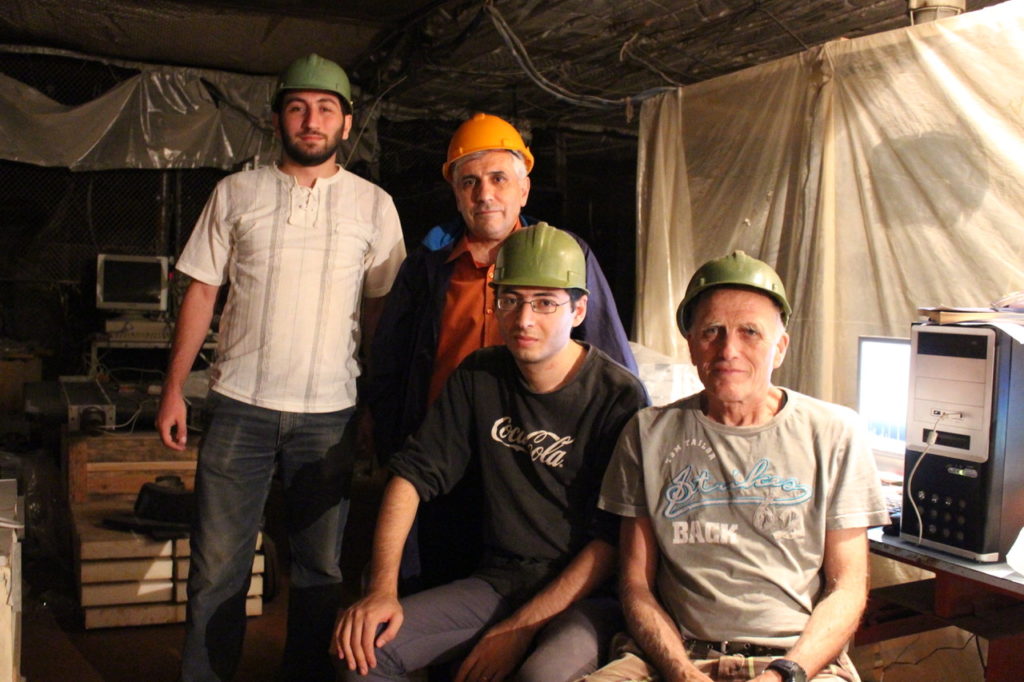By Hovsep Daghdigian
YEREVAN — The Avan district of Yerevan was once a separate village, dating back to the pre-Christian era. As Yerevan expanded during Soviet times, Avan was incorporated into the city of Yerevan. Within Avan there are a number of old churches; the most interesting perhaps being the partially ruined 5-6th century cathedral. This was the seat of a rival Catholicos espousing the Byzantine creed, in opposition to Armenian Apostolic creed. Also within Avan is the privately owned Avan Salt Company, producing both table salt and rock salt from its mine. The salt deposit dates to ancient geologic times when the region was covered with water, or perhaps a sea. As the water evaporated it left salt deposits that are now extracted from deep underground.
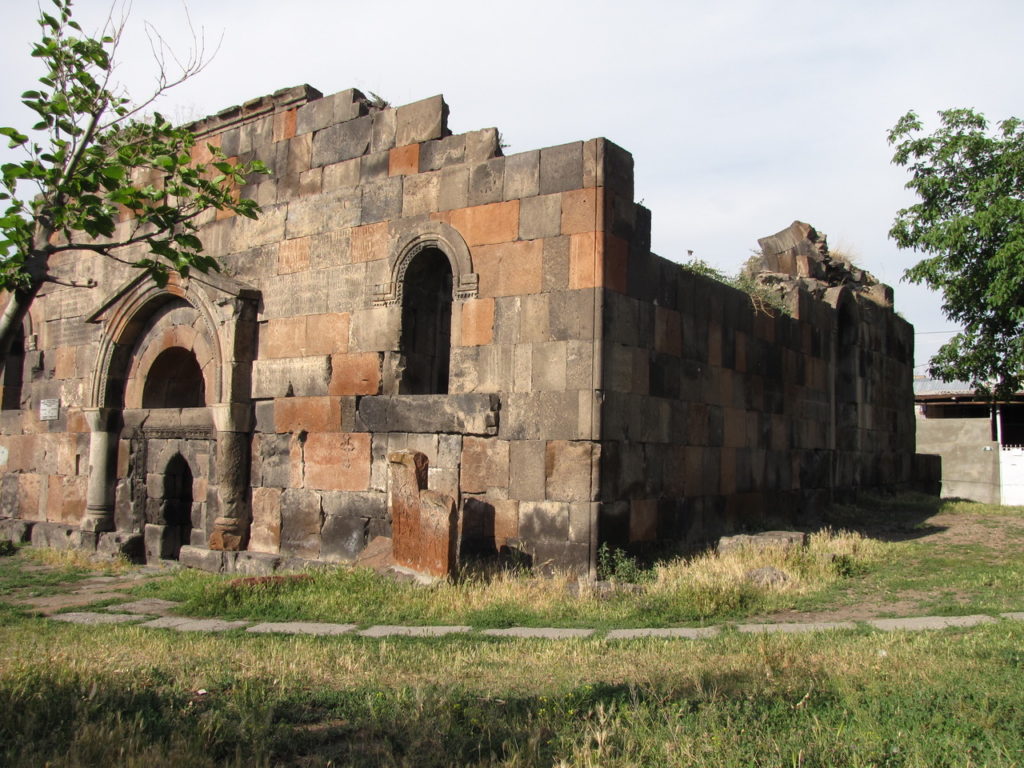
Over three decades ago the Yerevan Physics Institute (YerPhI) Experimental Division established a low-background radiation laboratory in the Avan salt mine where they conducted sensitive measurements investigating rare processes in both fundamental and applied physics. The laboratory was carved out of walls of pure salt creating a living room size chamber in the mine. Both YerPhI’s Experimental Division and the Cosmic Ray Division (CRD) operate sensitive cosmic ray particle detectors for which a low background radiation environment is essential. The scientists are interested in only the most energetic particles that can penetrate to the depth of the mine. Surrounding the laboratory are walls and a ceiling of high purity salt, with very low background radioactivity that would otherwise interfere with the sensitive measurements. If the laboratory were on the surface of the earth, abundant low energy cosmic ray particles, and minute sources of radioactivity on the surface, would interfere with the sensitive measurements and mask out the data that the scientists are actually interested in.
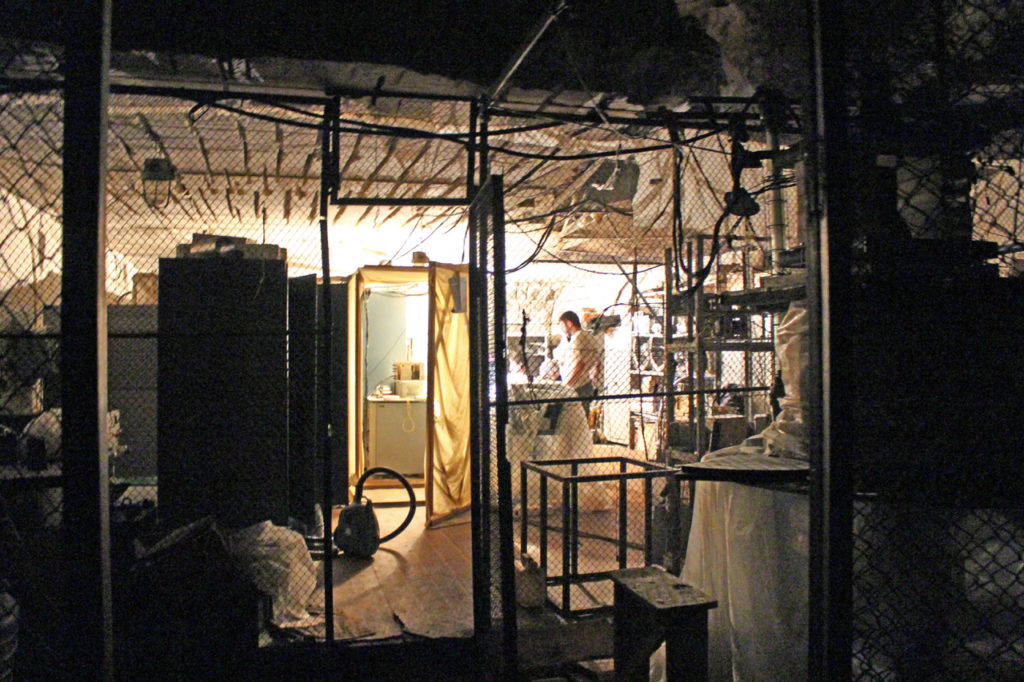
The head of CRD, Prof. Ashot Chilingarian, arranged for me to accompany a team of physicists during one of their periodic visits to the mine. After signing in at the mine and donning a hardhat I was cautioned not to touch the electric wires strung along the mine’s tunnels, and beware of the rail tracks on the tunnel floor and the carts that hauled salt out of the mine. Our descent into the mine via an elevator took about four minutes. A five-minute walk along a maze of tunnels took us to the laboratory. The mine operator requested I not publicize photos of the mining operations, though photos of the laboratory were allowed. The laboratory is built into a living room-sized cavern, carved into a wall of pure salt 240 meters (723 feet) underground. Within it are scientific instruments, 3-4 computers, with electricity supplied from wires strung throughout the mine, and a fiber optic connection for Internet and phone service. I imagined that one could simply rub a slice of cucumber on the wall and eat it (if you were not on a low salt diet)!
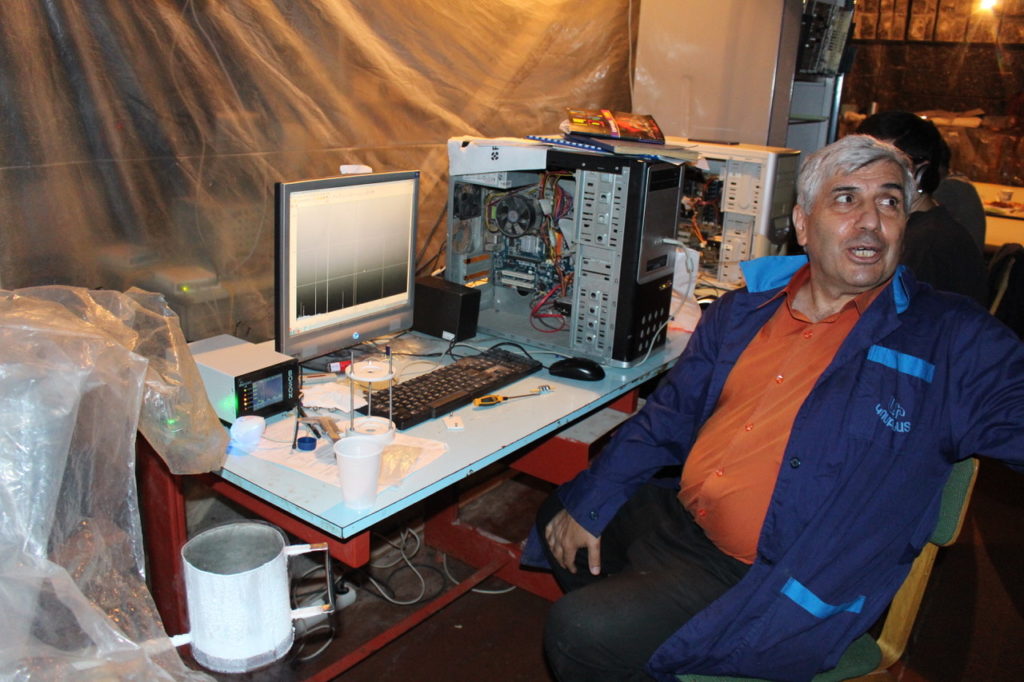
Muon Detectors: Scintillation detectors monitor muons (a heavy version of electrons that decay into other particles), which are generated in the upper atmosphere by cosmic radiation. YerPhI’s Cosmic Ray Division uses this data in space weather research and atmospheric physics. Only data on the most energetic muons is desired. Muons with sufficient energy to penetrate the earth and reach the detector indicate their presence by emitting a brief flash of light. Data from these events is recorded and sent to CRD’s center in Yerevan where it is analyzed and posted on the Internet. Muons with insufficient energy to penetrate to the depth of the laboratory are filtered out and thus ignored. Strange as it may seem, from deep underground these measurements may shed light on processes within the earth’s upper atmosphere and stratosphere, far above the underground facility. A process called Sudden Stratospheric Warming (SSW) disrupts airflow in the stratosphere, starting at an altitude of about 12 miles, which, through complex processes, can affect weather on the earth’s surface. Studying these processes can result in longer range and more accurate terrestrial weather forecasts as well as improve space weather predictions. Data from the mine is correlated with data taken from CRD’s observatories on Mt. Aragats and other sites.
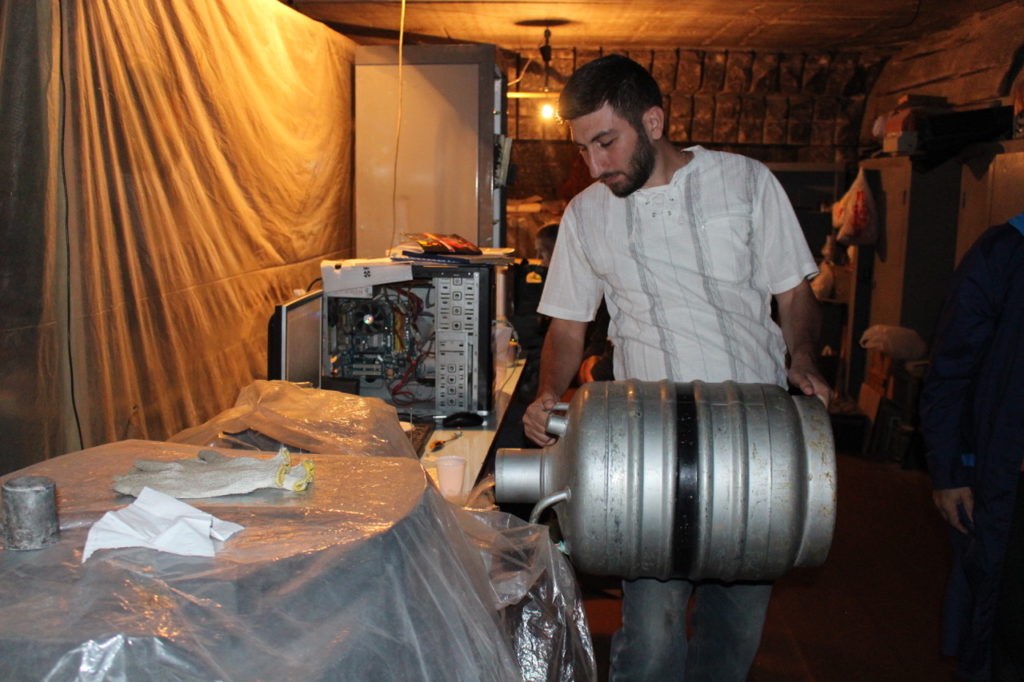
Gamma Ray Detectors: The second type of detector in the laboratory is a high sensitivity germanium detector for gamma-ray spectroscopy. Gamma rays are very high-energy photons. The germanium detectors are cooled by liquid nitrogen, between 320 to 346 degrees below zero Fahrenheit, to eliminate thermal noise and false signals. Since liquid nitrogen evaporates, it must be replenished weekly. The first observation of a previously predicted rare event called “two-neutrino double beta decay” of the germanium 76 isotope (Ge-76) was made in this laboratory. Now physicists from YerPhI’s Experimental Physics Division are searching for evidence of other rare nuclear decay events.




